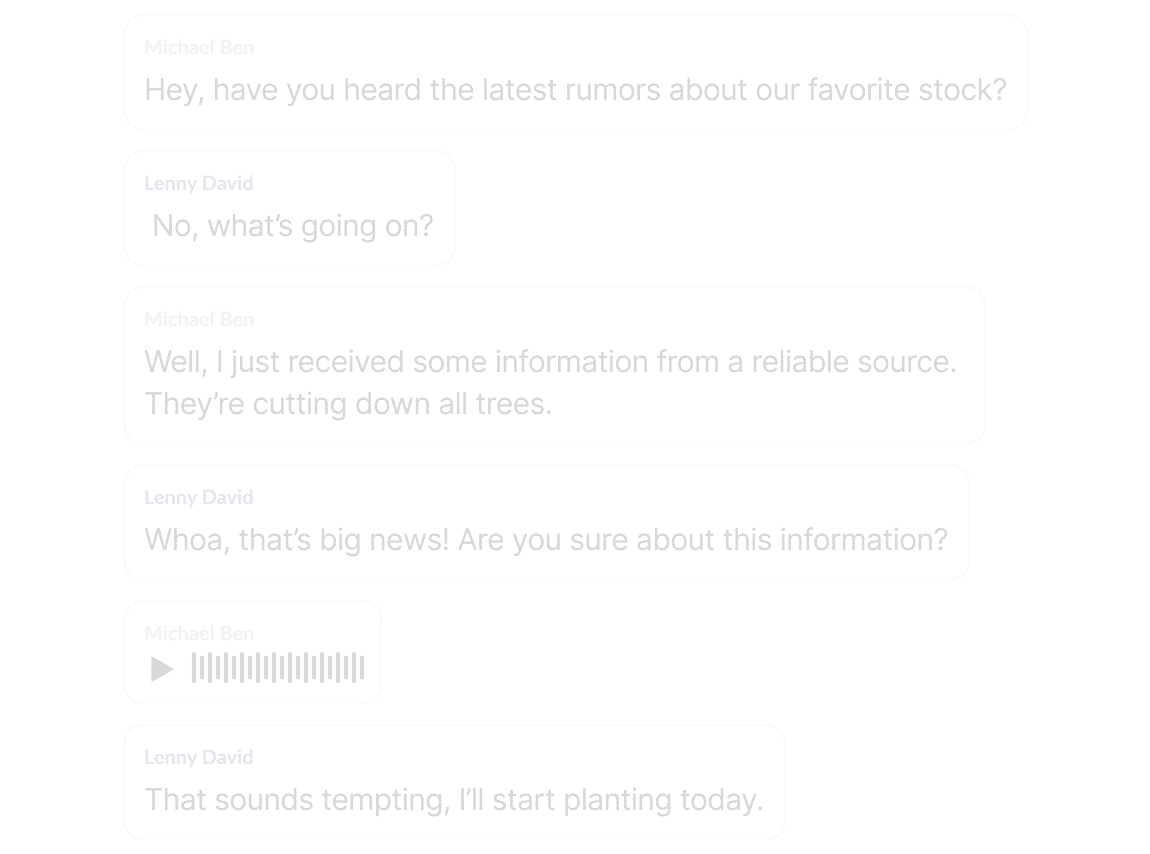Flying blind to MNPI
Current manual processes for managing MNPI are labor intensive, time consuming, and don’t uncover where real wall crossing is happening until it’s too late.
- Zero visibility on MNPI breaches
- No way to demonstrate ethical wall integrity
- Late violation discovery

Only the right eyes on every communication
Turn reactive protection of into proactive prevention by automatically monitoring every conversation with a powerful AI detection system.
- Pinpoint the MNPI breach moment
- Identify infractions early and take action
- Fully monitored ethical walls

